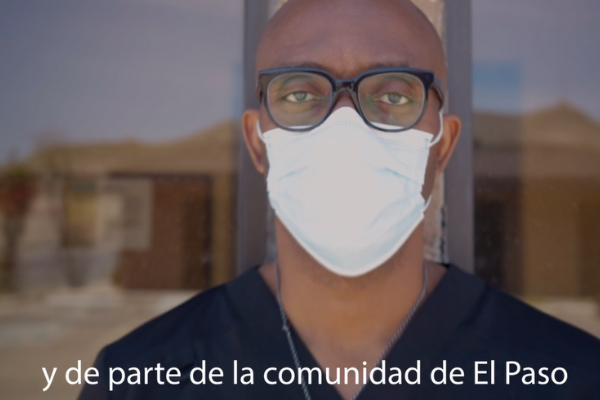
While city and county health authorities all over Texas keep
searching for a recipe to get more local residents vaccinated for COVID-19, El
Paso – the city and the county – have found what Ogechika Alozie, MD, calls a
“secret sauce.”
About a year after being one of the state’s most troublesome
hot spots for the virus, El Paso County has climbed out of the direst of those
straits, thanks in part to vaccination rates that stand out among Texas’ 254
counties.
According to recent data posted to state
COVID-19 dashboards, 76.5% of El Paso County’s 12-and-over population was
fully vaccinated. That was significantly higher than the state as a whole (62.7%
fully vaccinated), and higher than other large counties in the state, including
Harris (66.1%), Dallas (61.9%), Tarrant (59.5%), and Travis (71.7%). Just under
90% of El Paso County’s vaccine-eligible population had received at least one
dose.
Physicians in the area tell Texas Medicine Today that
particular characteristics about El Paso – and what the area encountered during
its worst moments of the pandemic – have driven its vaccination success.
Dr. Alozie, one of the state’s most prominent infectious
disease specialists, cites three major factors forming that secret sauce.
First, the crushing impact of COVID-19 on El Paso in the fall of 2020 propelled
the community into action once vaccines became widely available. In a
close-knit community and culture, people were terrified, he says, and wanted to
make sure it didn’t happen again.
Pediatrician Alison Days, MD, served as president of the El
Paso County Medical Society during COVID-19’s worst days last year. “Every
other person here in El Paso probably knows somebody who was extremely ill or
died from COVID, and maybe more than one,” she said. “I have some patients, who
literally half their family passed away from it. Multiple adults within the
family passed away. … I do think that lends itself to people wanting to get
vaccinated.”
Second, Dr. Alozie says, the messaging was consistent.
Physicians in the area worked hard in getting residents to understand how
vaccines could play a role in stopping the spread. He says the misinformation
that has plagued other communities was at a minimum in El Paso.
Added Dr. Days: “Physicians as a whole here were pretty much
united in acceptance of the vaccine. We didn’t have too many docs who were
naysayers to the vaccine initially, or even nurses. There were some; we’re not at
100%. For the most part, we were united initially in getting ourselves vaccinated,
and then getting the word out to our patients to get vaccinated.”
Lastly, Dr. Alozie says, El Paso was already historically
one of Texas’ most reliable cities for vaccine uptake when it comes to the
likes of pediatric immunizations, flu shots, and human papillomavirus vaccines.
“When you take all of those things put together, it wasn’t
really ever a situation where people were saying, ‘Well, I don’t want to get
vaccinated.’ [It was], ‘When can I get vaccinated? How can I get vaccinated?
Where are the avenues?’” he said. “This county health department, UMC
[University Medical Center of El Paso], the Hospitals of Providence, all of the
various [federally qualified health centers], Immunize El Paso – everybody
stepped up.
“Damn, there were some times that various places were doing
vaccines until 10 pm. They were doing it on the weekends. Those are all the
real keys.”
Dr. Alozie says it’s heartening that the community rallied to climb out of the pandemic’s
darkest days. Help came from everywhere, including medical students from neighboring
New Mexico: Some students from Burrell College of Osteopathic Medicine in Las
Cruces drove across the border to help El Paso County Medical Society with an
extended effort to sort and distribute personal protective equipment to
physicians and health organizations across the county.
“Historically, it’s one of those things – you think of El
Paso as what’s called an HPSA: a health professional shortage area,” Dr. Alozie
said. “It’s always this thing where we don’t have enough doctors, we don’t have
enough nurses. We still don’t. But it’s just kind of remarkable to me how
everything came together. We probably paid a price last year because we don’t
have enough doctors and nurses and [respiratory therapists]. But for me, one of
the silver linings in all of that was that the whole health care community came
together. And that was remarkable.
“If you had said that two years ago, I probably would’ve
said, ‘Yeeeaah, I don’t know about that. It’s kind of parochial. Everyone wants
to protect their turf.’ But when it mattered, all the health care organizations
and providers came together.”